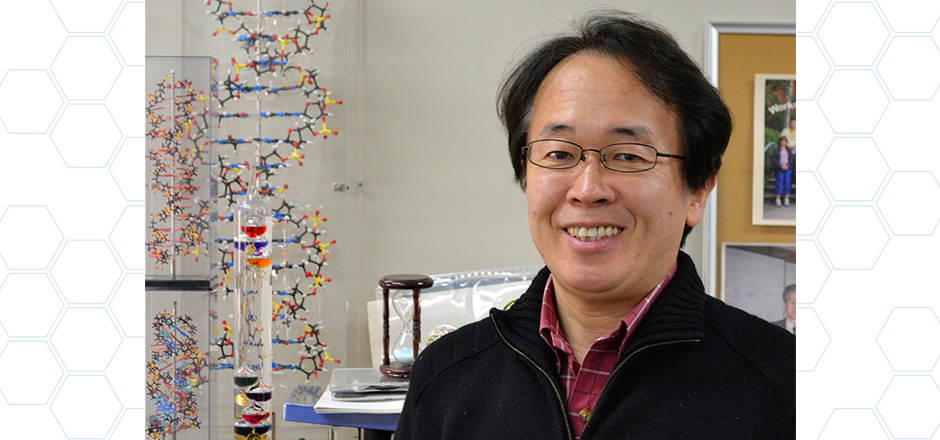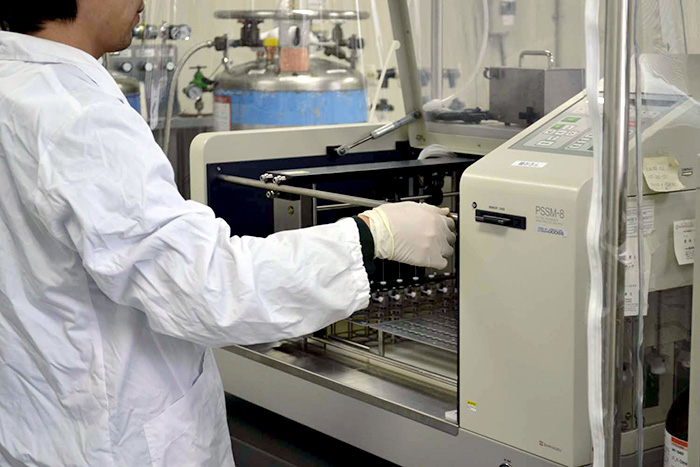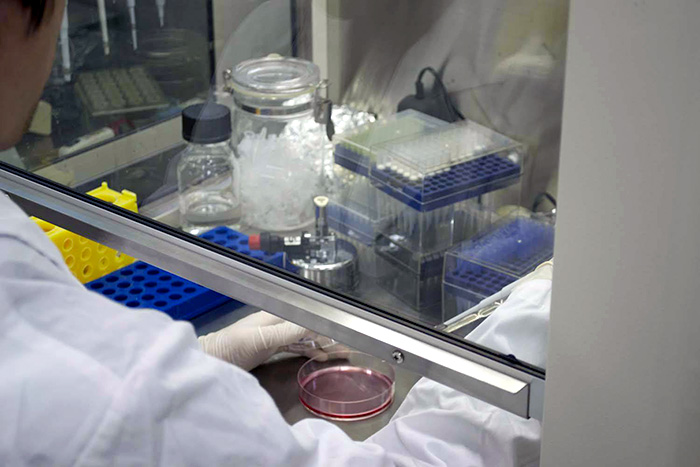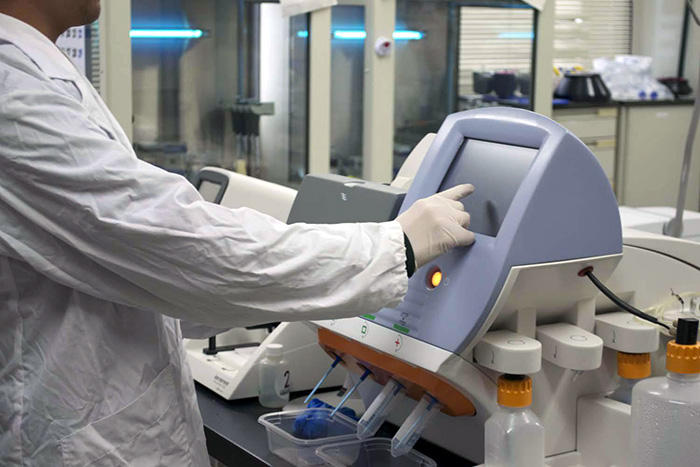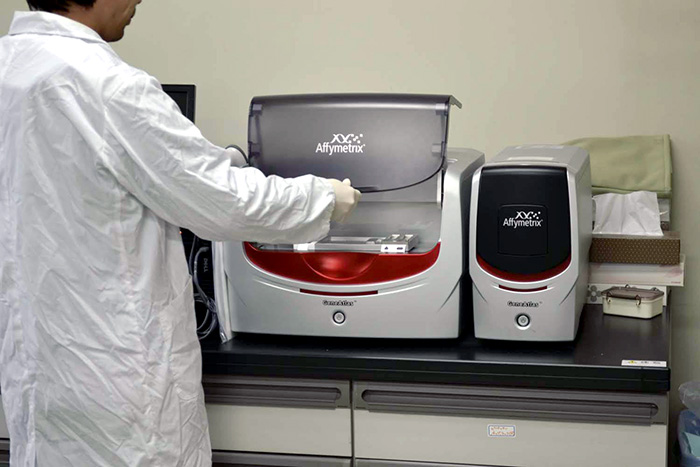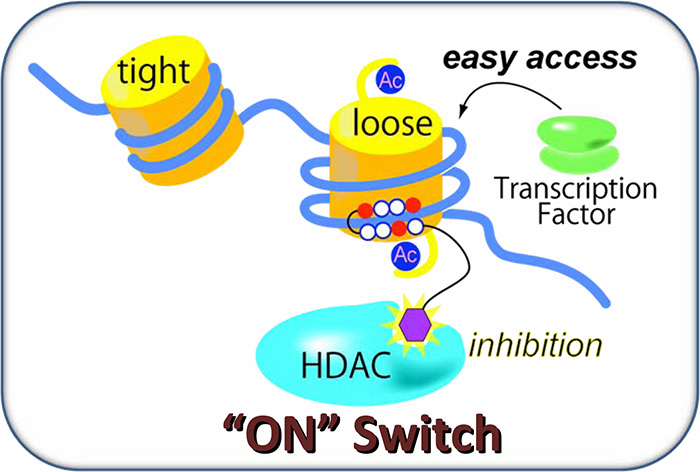Research and Development Projects Adopted in FY2014
Development of innovative polyamides that control gene expression on-demand
Project Leader:Sugiyama Hiroshi
Professor, Graduate School of Science, Kyoto University
The regulation for specific gene expression by the chemical technology:
By the epoch-making developments for the technology of both diagnosis and measurement, various genetic information including the human genome sequences and mutations is being unraveled. However,
direct gene-regulating therapy by chemical drugs has until now remained in various research stages of chemical biology.
N-methylpyrrole (P)–N-methylimidazole (I) polyamides are versatile sequence-specific molecules that can recognize and bind predetermined DNA sequences by the arrangement of P and I in the molecular design,
and we have been exploring the prospect of developing them as innovative PI-polyamide drugs to control specific gene expression since the 1990's.
For example, histone deacetylase (HDAC) inhibitors, histone acetyltransferase (HAT) activators,
DNA methyltransferase inhibitors, were possible interesting candidates as gene-regulating epigenetic drugs that can be conjugated to PI-polyamides.
We propose to achieve effective specific drug-delivery by programmable DNA-binding PI-polyamides, which possess good membrane permeability.
The creation of innovate drugs from Kyoto University:
Conventional antibody, protein, or nucleic acid drugs, inhibit the activity downstream of the genetic information by targetting RNA and proteins. Since our PI-polyamides directly act on DNA genetic information,
it will be a unique technique for controlling specific gene expression. We strongly believe that this project will make a significant contribution towards specific gene-regulation and treatment by delivering PI-polyamide conjugates.
Over the past 25 years, we have pioneered the DNA research field in chemical biology using a methodology of organic chemistry, biochemistry,
and computational chemistry. We have continued to research the chemical synthesis, the function and evaluation of PI-polyamides by the support of Kakenhi, CREST.
In the future, we expect that the results of our PI polyamide research will contribute to the development of innovative drugs, which will be licensed to pharmaceutical corporations.
<Figure1>
The solid-phase synthesizer of PI- polyamide conjugates. PI-polyamide conjugates are synthesized based on a program of this peptide solid-phase synthesizer.
In our laboratory, a wide variety of PI-polyamide conjugates have been produced, and some of the PI-polyamides are provided to coworkers by the milligram which target DNA sequences of their interest.
<Figure2>
A regulation experiment of gene expression in human skin cultured cells. Biological functions of PI-polyamides in human skin cultured cells are evaluated for screening.
Particularly, RT-PCR is employed to analyze specific activating or repressing effects on certain gene clusters related to cell reprogramming and differentiation.
<Figure3>
A next-generation sequencer. PI-polyamide conjugates can bind double-strand DNA sequence-specifically. It is crucial to investigate changes of gene expression generated by their binding at a genome level.
The next generation-sequencer enables global analyses of the binding sites of PI-polyamide conjugates, and can also identify the positions on chromosomes where epigenetic changes occur.
<Figure4>
A DNA microarray system. Changes of gene expression caused by PI-polyamide conjugates should be examined globally at a cell level.
DNA microarray is a tool to analyze global gene expression changes triggered by PI-polyamide conjugates.
<Figure5>
The mechanism of epigenetic upregulation by a PI-polyamide conjugate. A conjugate of a pyrrole-imidazole polyamide (PI-polyamide) and histone deacetylase (HDAC) inhibitor activates histone acetyltransferase (HAT).
This acetylation loosens nucleosomes, which initiates binding of transcription factors and results in selective gene expression at PI-polyamide binding sites.
<Figure6>Organization diagram of our project
Through a cross-cutting research on PI-polyamides, a class of DNA-binding molecules, we aim to control specific gene expression. One of the goals is development of innovative drugs launched from Kyoto University based on this unique chemical technique.
